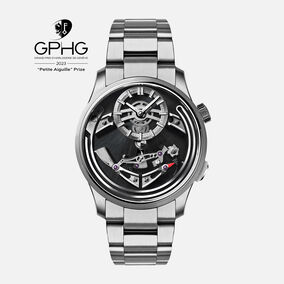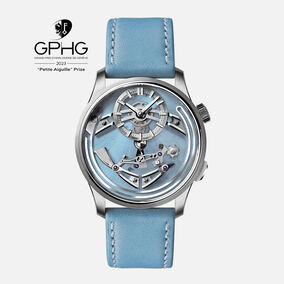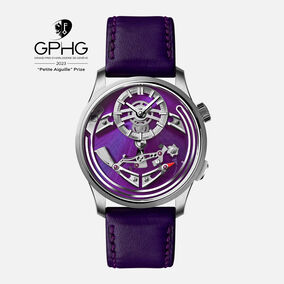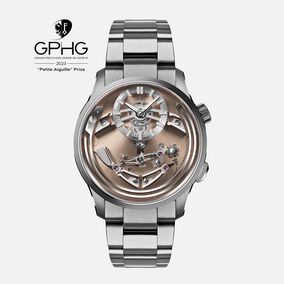Not only is it gorgeous, but the Bel Canto’s platine also plays host to the watch’s outward-facing elements.
At the heart of every watch lies a complex, intricate, yet little-understood component that forms the basis for all its functions – the platine. This is generally a utilitarian metal disc, invisible on many watches as it is hidden beneath the dial (on a watch with an exhibition case back, of course, some of it will be visible) to which all the mechanical components are mounted. In some ways it could be likened to the spine of your watch. Without a platine, there can be no mechanical movement.

With an open-dial watch like Bel Canto, however, things are rather different. It uses a module platine which is front-and-centre: with no dial above it, it has to do two crucial jobs at once – provide a home for all the mechanical bits and pieces, and look utterly gorgeous while doing it. On your Bel Canto, everything that’s coloured – be it Nero or Cielo, Viola or Rosa – beneath the gong, the time-telling sub-dial, and the little bird with its hammer tail and on/off indicator beak, is the platine. It’s only thanks to state-of-the-art manufacturing processes that we can ensure that each platine is created with the required precision and attention to detail.

We use a specialist supplier to manufacture each one, working in close consultation with Frank Stelzer, Christopher Ward’s Technical Director, and others at the atelier. Here, skilled technicians use a precisely engineered blank, known as a barquette, to quickly and efficiently mill each platine to the most exacting specifications. Using a highly advanced CNC machine – a computer-controlled automated machining tool; the name stands for ‘Computer Numerical Control’, if you’re interested – the basic machining for each individual platine takes around 41 minutes. The individual technician, Jérôme Vittot, who operates the 5-axis Bumotec CNC machine – a most impressive CHF 700’000 piece of kit – was actually in ongoing communication with Frank for many months before the first platine was ever made, each keen to make sure that everything was operating at the absolute optimum.
“A great platine design holds each part of the movement safely and securely in place, while making sure everything takes up the minimum practical amount of space,” says Jörg Bader Junior, Head of Product at Christopher Ward’s Biel atelier. “Nothing can be allowed to negatively impact on the height of your watch unnecessarily, after all. Our team has years of experience creating platines that are exceptionally flat and functional, thus ensuring that your watch will operate flawlessly for years to come, while remaining compact and easy to wear.”

Though every mechanical watch ever made depends upon a platine in some form, creating great ones remains a specific and ongoing challenge. Material distortion is notoriously common during the milling process, particularly in the platine’s thinnest areas. The material used is brass, since it can be machined easily and holds tolerances exceptionally well, ensuring the finished product is both durable and precise.
Once the milling is complete, we then enter a rigorous quality control process, necessary to ensure that each platine meets our highest standards for dimensional accuracy and surface quality. The finishing process then begins, which includes fine blasting on the underside to provide a smooth and even surface.

For more behind the scenes stories from Christopher Ward visit; christopherward.com/loupe
Related watches
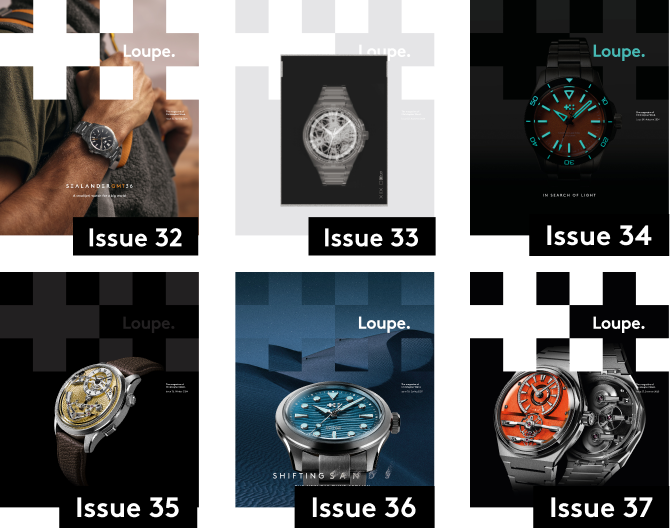
Sign up to Loupe magazine
Loupe is Christopher Ward’s quarterly in-house magazine. If you want to know what’s happening at CW (and you love great journalism), this is where to start. Alternatively, you can read all our back issues on your computer, tablet or phone.
Order your free copyRead Loupe online


